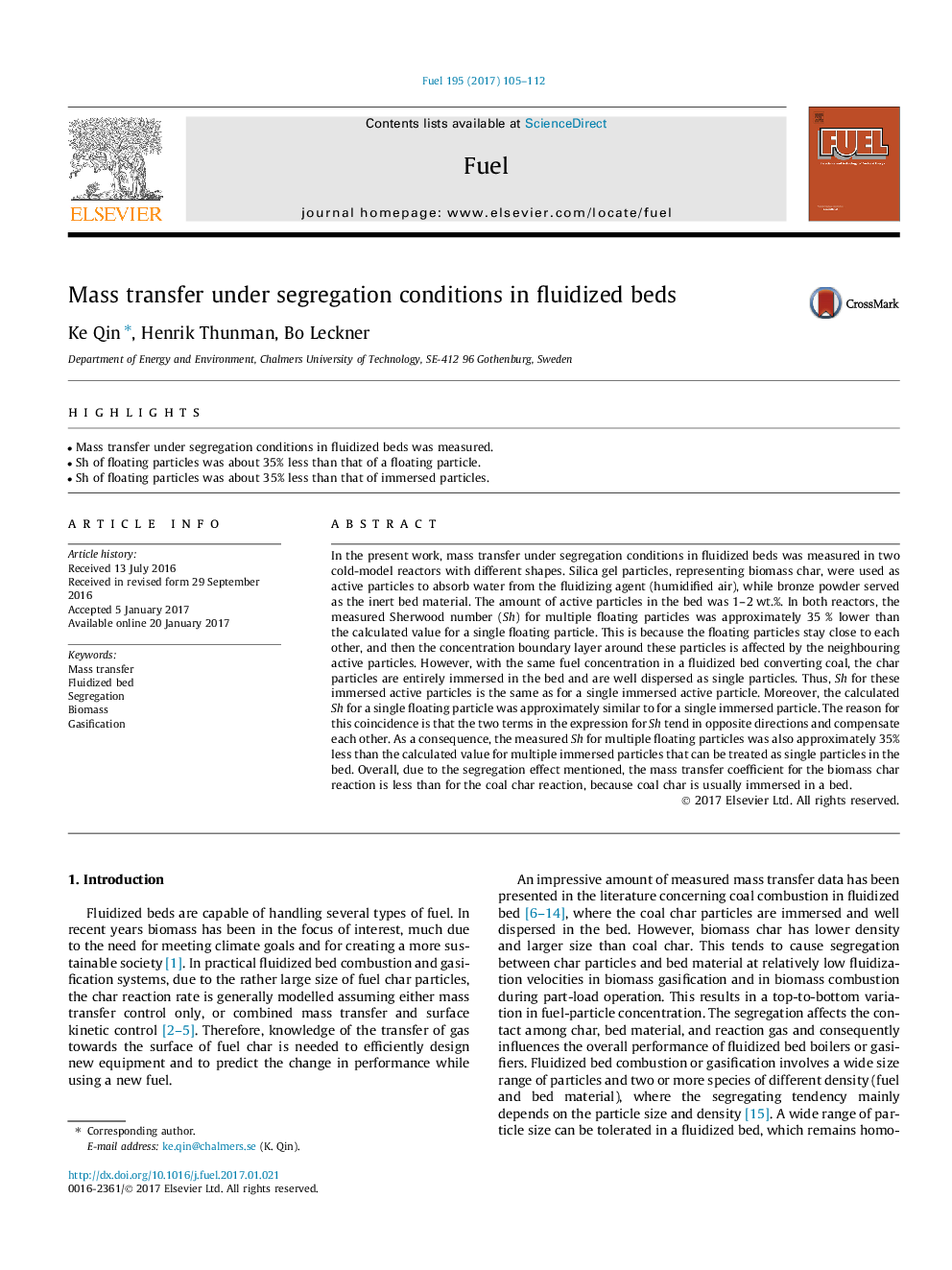| کد مقاله | کد نشریه | سال انتشار | مقاله انگلیسی | نسخه تمام متن |
|---|---|---|---|---|
| 6475350 | 1424969 | 2017 | 8 صفحه PDF | دانلود رایگان |
- Mass transfer under segregation conditions in fluidized beds was measured.
- Sh of floating particles was about 35% less than that of a floating particle.
- Sh of floating particles was about 35% less than that of immersed particles.
In the present work, mass transfer under segregation conditions in fluidized beds was measured in two cold-model reactors with different shapes. Silica gel particles, representing biomass char, were used as active particles to absorb water from the fluidizing agent (humidified air), while bronze powder served as the inert bed material. The amount of active particles in the bed was 1-2Â wt.%. In both reactors, the measured Sherwood number (Sh) for multiple floating particles was approximately 35 % lower than the calculated value for a single floating particle. This is because the floating particles stay close to each other, and then the concentration boundary layer around these particles is affected by the neighbouring active particles. However, with the same fuel concentration in a fluidized bed converting coal, the char particles are entirely immersed in the bed and are well dispersed as single particles. Thus, Sh for these immersed active particles is the same as for a single immersed active particle. Moreover, the calculated Sh for a single floating particle was approximately similar to for a single immersed particle. The reason for this coincidence is that the two terms in the expression for Sh tend in opposite directions and compensate each other. As a consequence, the measured Sh for multiple floating particles was also approximately 35% less than the calculated value for multiple immersed particles that can be treated as single particles in the bed. Overall, due to the segregation effect mentioned, the mass transfer coefficient for the biomass char reaction is less than for the coal char reaction, because coal char is usually immersed in a bed.
Journal: Fuel - Volume 195, 1 May 2017, Pages 105-112
